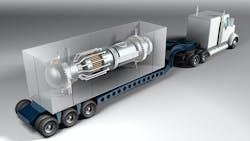It’s December and the holiday sales are in full swing as lots of new tech-toys fight for our attention and dollars! Each mail delivery brings new catalogues and flyers displaying the most wonderous gadgets available. There’re devices that interact directly with our handheld electronics making them more fun to play with and, in some cases, more capable. The first one catching my attention checks both boxes.
It's a mini photo printer that turns smartphone digital photos into paper prints via Bluetooth connectivity. Another is a tablet-like device that gives you the feeling of an old notepad with a modern twist. The user jots down their thoughts using a stylus on the device’s template. They are transcribed directly using cloud connectivity where they are organized and available for distribution.
Modernizing Murphy’s Law
Staying connected is the key, but handheld electronics have an unquenchable appetite for power, and it seems like they always need recharging at the most inconvenient times. Chances are the more you need the device the greater the odds are its battery is almost dead. This must be another corollary to Mr. Murphy’s law and if it isn’t, it should be! Extreme weather and its power disruptions have increased this problem significantly. There are a couple of handy widgets for our handheld tech-toys designed to combat that condition too.
Pocket rechargers lead the list of practical holiday offerings. These devices are available in a variety of sizes, power capacities, and connection options. Some of the pocket rechargers plug directly into the handheld device’s USB port. There are also mini-power banks that come with a variety of cabling choices. But what happens if you forgot to charge your pocket power pack?
Relax, these handy power banks can be found with built in solar panels and there are also foldable solar panels available. Foldables are sized to fit into a variety of small storage spaces like a pocket. Granted it may need a large pocket, but for most of us that’s not a problem. By combining mini-power banks with foldable solar panels field personnel have the equivalent of a back pocket microgrid that can be taken wherever it’s needed.
Microgrid in a Box
That’s really putting resiliency up close and personal, which got me thinking about last September’s “Charging Ahead’s” feature article about the microgridation of the power grid (Editor’s note, see “Charging Ahead” https://tdworld.com/21271684 for more details). Researching that article turned up some interesting material about a project called “Microgrid In A Box,” but it didn’t fit with the flow or the space of the article, so I put it aside until now.
The Idaho National Laboratory (INL) is developing a portable self-contained and relocatable microgrid. It can be moved from emergency to emergency quickly supplying power for critical loads. INL uses shipping containers filled with the normal microgrid elements, including batteries with grid-forming inverters. Power can come from diesel generators, hydropower, small nuclear reactors (SNRs), and distributed generation. The utilization of SNRs for a microgrid power supply really caught everyone’s attention, but it makes sense.
These SNRs are actually microreactors size wise, and are ideal for a portable microgrid power supply. INL said they are ready to test their “microgrid in a box” using the DOE’s (Department of Energy) sodium-potassium cooled microreactor. It will power a 100 kilowatt (kW) linear generator that can be installed in a truck-mounted shipping container. Once again, we are seeing the early stages of a transformative technology as microgrids become portable.
Right now, portable microgrids are definitely a niche device for niche markets, but if you look back about a decade you’ll see the stationary microgrids were in much the same position. It’s going to be interesting to see if the microreactor is accepted for a portable microgrid’s power source. It has a lot of obstacles to overcome, but the benefits are substantial.
I seem to have gotten off my initial subject of back pocket microgrids, but it’s not really that far off base. Basically, a microgrid in a box and a microgrid in your back pocket are about accessible power sources. Carrying a microgrid in your pocket to keep handheld electronics operating seems almost as farfetched as parking a nuclear powered portable microgrid next to a critical load to keep it functioning. We have definitely reached the stage where individual solutions are needed for each vital application. The opportunity is at hand and I can’t wait to see these two adaptations become commonplace!
About the Author
Gene Wolf
Technical Editor
Gene Wolf has been designing and building substations and other high technology facilities for over 32 years. He received his BSEE from Wichita State University. He received his MSEE from New Mexico State University. He is a registered professional engineer in the states of California and New Mexico. He started his career as a substation engineer for Kansas Gas and Electric, retired as the Principal Engineer of Stations for Public Service Company of New Mexico recently, and founded Lone Wolf Engineering, LLC an engineering consulting company.
Gene is widely recognized as a technical leader in the electric power industry. Gene is a fellow of the IEEE. He is the former Chairman of the IEEE PES T&D Committee. He has held the position of the Chairman of the HVDC & FACTS Subcommittee and membership in many T&D working groups. Gene is also active in renewable energy. He sponsored the formation of the “Integration of Renewable Energy into the Transmission & Distribution Grids” subcommittee and the “Intelligent Grid Transmission and Distribution” subcommittee within the Transmission and Distribution committee.
